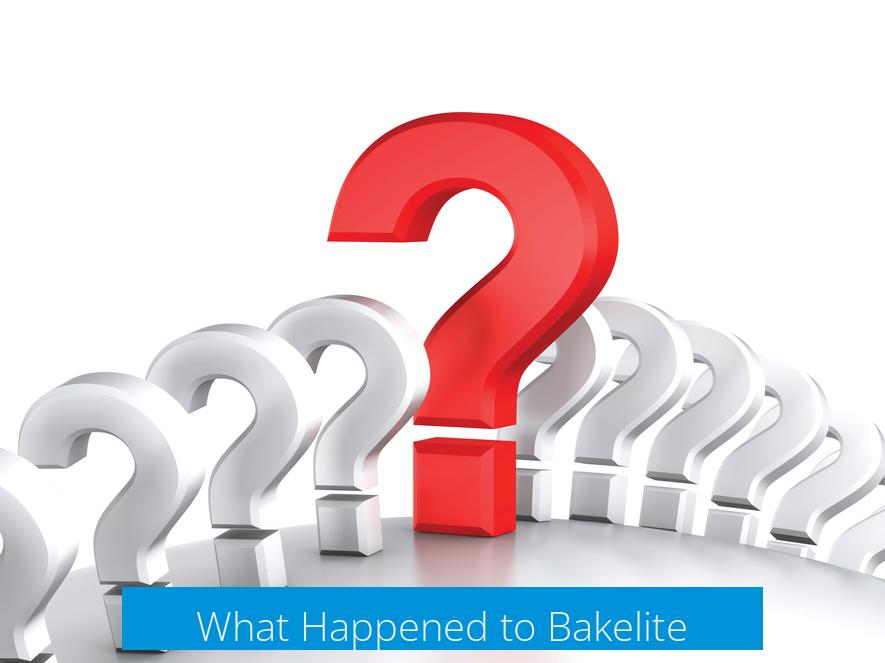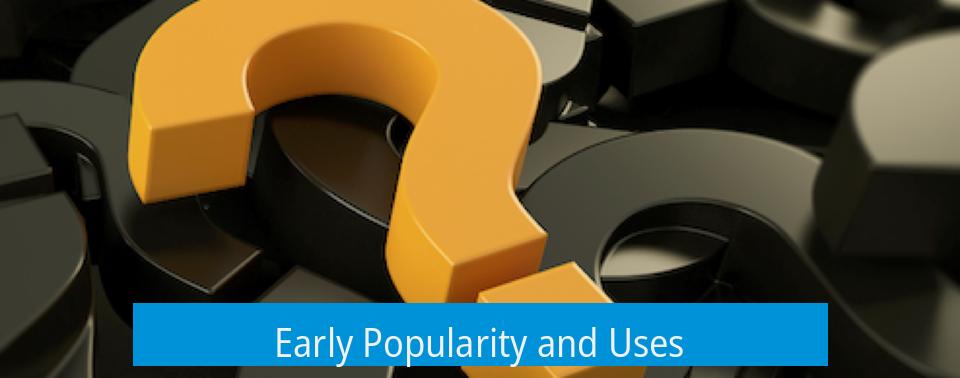What Happened to Bakelite?

Bakelite, the first synthetic plastic invented in 1907, declined in use due to its brittleness, toxicity, high production cost, and the rise of superior plastics like ABS and PVC. It remains in niche industrial applications but is no longer common in consumer products.
Historical Significance of Bakelite

Bakelite, formally polyoxybenzylmethylene glycolanhydride, was developed by Belgian chemist Leo Baekeland in 1907 and patented in 1909. It pioneered the era of synthetic plastics and became a milestone in materials science.
Before Bakelite, plastics such as nitrated cellulose were common but had serious drawbacks. Nitrocellulose was highly flammable and degraded over time, turning historic films into powder. Bakelite provided a more durable, heat-resistant alternative.
Early Popularity and Uses

- Moldable into diverse shapes and hardened permanently
- Electrical insulators, telephone and radio casings
- Kitchenware, jewelry, pipe stems, toys, and firearm parts
- Dominated the “art plastic” market from the 1930s to 1950s
Material Properties

Chemical Composition and Structure

Bakelite forms via a condensation reaction between phenol and formaldehyde under heat and pressure, creating a thermosetting resin. This polymer cures irreversibly and cannot be reshaped once set.
Physical Characteristics
- Brown solid, density approximately 1.3 g/cm3
- Thermal conductivity around 0.2 W/(m·K)
- Electrical nonconductivity and heat resistance
Limitations
- Brittleness: Susceptible to cracking and breaking under stress
- Toxicity: Made from formaldehyde and phenol, both toxic chemicals; emits formaldehyde when heated
- Recycling challenges: As a thermoset, Bakelite cannot be melted and remolded
- Color limitations: Early Bakelite was mainly dark-colored due to its fillers
Reasons for Decline
Despite its groundbreaking nature, Bakelite’s drawbacks limited its long-term use. Manufacturers discovered plastics that outperformed Bakelite in versatility, strength, and safety.
Competition and Alternatives
- ABS (Acrylonitrile Butadiene Styrene) offers impact resistance and easy processing
- PVC (Polyvinyl Chloride) provides chemical resistance with cheaper production
- Polyalkenes (like polyethylene and polypropylene) are flexible and inert
- Urea-formaldehyde and other phenolic resins allowed brighter colors and improved properties
Patents and Market Shifts
The expiration of Baekeland’s heat and pressure patents in 1927 led to increased competition. New companies produced various phenolic resins marketed under the Bakelite brand while improving color and processing.
Production Complexity and Cost
Bakelite production requires precise control over multiphase chemical reactions and curing conditions. This approach is more complex than thermoplastics, raising costs and slowing mass production efficiency.
Current Uses and Status
Modern industry rarely uses Bakelite in consumer goods due to alternatives with better mechanical and environmental profiles. It maintains niche uses, such as in materials laboratories for sample preparation. For example, it is employed as a stable matrix for grinding specimens before electron microscopy.
Collectors and antique enthusiasts value vintage Bakelite for its historic and aesthetic qualities, especially in antiques, jewelry, and appliances. However, new Bakelite products are almost nonexistent commercially due to the factors outlined.
Summary of Key Points
- Bakelite is the first synthetic thermosetting plastic, invented in 1907 by Leo Baekeland.
- It gained early popularity due to heat resistance, electrical insulation, and moldability.
- Its brittleness, toxicity, and recycling difficulties limit modern usage.
- Competition from newer plastics like ABS, PVC, and polyalkenes replaced Bakelite.
- Bakelite production complexity and costs hindered continued widespread manufacturing.
- Its commercial use declined sharply after patent expiration and discovery of alternative plastics.
- Today, Bakelite is mainly prized by collectors and used in limited industrial applications.
Whatever Happened to Bakelite?
The straightforward answer? Bakelite isn’t the superstar it once was. It didn’t vanish overnight, and it’s not *completely* extinct, but its glory days are long behind it. The once beloved “first synthetic plastic” lost favor due to its drawbacks and was replaced by newer, shinier, and more versatile plastics.
Let’s take a quick trip down memory lane, examine Bakelite’s rise, fall, and curious modern afterlife—with a little twist of insight and a chuckle here and there.
From Pioneer to Powerhouse
In 1907, Belgian chemist Leo Baekeland cracked the code. He crafted Bakelite, the first ever synthetic plastic. This was a game changer. Suddenly, manufacturers could mold a durable material that resisted heat and electricity. It became indispensable. Think: radios, telephones, kitchenware, pipe stems—and even children’s toys.
Bakelite was the industrial rockstar of the 1930s to 1950s, dominating what was then called the “art plastic” domain. Its electrical nonconductivity and heat resistance made it invaluable, especially for electrical insulators and consumer appliances. Its dark, smooth surfaces had a distinctive look we now adore vintage collectors.
Why Did Bakelite Fall Out of Favor?
Here’s the rub: Bakelite is a thermosetting polymer. That means once it cures, it sets for life—no melting down and recycling like other plastics. In today’s eco-conscious world, that’s a major drawback. The inability to recycle easily nudged manufacturers to find alternatives that didn’t clog the planet.
On top of that, Bakelite is chemically a polymer of phenol and formaldehyde. Both are toxic. And here’s the kicker—some leftover monomers still hung around after polymerization, plus it gave off formaldehyde fumes when heated. Not exactly the safest thing to cook near or have in poorly ventilated spaces.
Not to mention its brittle nature. Phenolic resins, including Bakelite, don’t flex well. Drop your Bakelite radio, and you’ll likely have a cracked shell. Other plastics like ABS and PVC offered flexibility, durability, and much better color options. Because Bakelite’s fillers made it mostly dark, manufacturers were limited in producing vibrant, eye-catching designs.
The Competition and Innovation Wave
Once Baekeland’s patents expired in 1927, the floodgates opened. Competitors rushed in with new phenolic resins and urea-formaldehyde types. These materials could be produced in brighter colors and with fewer brittle issues.
Plus, better plastics like ABS (Acrylonitrile Butadiene Styrene) and PVC (Polyvinyl Chloride) stepped onto the scene. They were cheaper, easier to work with, more colorful, and lighter. In essence, these plastics did what Bakelite did—only better.
There was also a cost and production complexity factor. Bakelite’s multi-stage manufacturing, starting with phenol and formaldehyde heated with catalysts, was complex. Compared to emerging plastics, this made Bakelite less attractive economically.
Is Bakelite Completely Gone?
Not exactly. Though no longer king of the consumer plastic hill, Bakelite hasn’t disappeared. It still holds a niche in materials labs. Scientists use Bakelite pucks to embed small samples for methods like grinding or Scanning Electron Microscopy (SEM). The black solid puck it forms is perfect for this purpose.
Also, vintage Bakelite remains prized among collectors. Restoring old radios, jewelry, or kitchenware can be a passion project. But new Bakelite products? Those are rare, and not for everyday use. Toxicity and brittleness make it a poor choice for modern manufacturing.
What Can We Learn From Bakelite’s Journey?
- Innovation isn’t forever: Bakelite was revolutionary but couldn’t keep pace with evolving demands and materials.
- Material science marches on: Advanced plastics address Bakelite’s weaknesses—flexibility, recyclability, safety.
- Sometimes, the “old ways” remain useful: Lab uses reveal that Bakelite still has a role, just not in your kitchen or phone set.
Imagine the nostalgia attached to those Bakelite appliances. Their steady weight and smooth finishes whisper stories from nearly a century ago. But bring one of those radios into the 21st century, and you’d find yourself craving something lighter, brighter, and safer.
Is There a Market for New Bakelite?
Collectors and nostalgia buffs would love some fresh Bakelite, but the obstacles are steep. The cost, safety concerns, and environmental issues make it impractical for mass production. New plastics simply do the job better and without the *formal* problems.
Could a boutique manufacturer revive Bakelite-style resin with modern tweaks? Possibly. But it’s unlikely to happen on an industrial scale. You’d be paying a premium for a vintage aesthetic, not cutting-edge performance.
The Bottom Line
Bakelite faded because the world moved on. Despite its star-studded debut as the first synthetic plastic, it couldn’t meet the modern needs for safety, cost-efficiency, and versatility. Recyclability and toxicity issues, combined with the rise of superior plastics, pushed Bakelite into the shadows.
Yet, it’s not forgotten. It quietly remains in labs and collectors’ shelves—a reminder of how material science started a revolution.
“Bakelite might have lost the race, but it sure ran a memorable first lap.”
So the next time you pick up a vintage Bakelite radio or comb through an antique store for that classic plastic allure, you’re holding a piece of material history. Just don’t try tossing it in the recycling bin.
What caused Bakelite’s decline in popularity?
Bakelite was replaced by plastics like ABS and PVC. These are easier and cheaper to produce. Bakelite’s brittleness and recycling trouble also made it less favored over time.
Why is Bakelite difficult to recycle?
It is a thermosetting polymer, meaning it hardens permanently after forming. This irreversible curing stops it from being melted down and reused like other plastics.
Is Bakelite toxic to use?
Yes, Bakelite is made from formaldehyde and phenol, both toxic chemicals. It can release formaldehyde gas when heated, creating health concerns and limiting its modern use.
What are Bakelite’s main limitations as a material?
Bakelite is brittle and cannot withstand impacts well. Its physical properties do not meet many modern demands. This brittleness limits its applications today.
Is Bakelite still used today?
Bakelite is rarely used in consumer products now. It finds niche roles in labs, for example, to embed samples for grinding or microscopy due to its stability.
Did Bakelite have a place in history?
Yes, Bakelite was the first synthetic plastic, invented in 1907 by Leo Baekeland. It revolutionized industries with its heat resistance and electrical insulation.





Leave a Comment